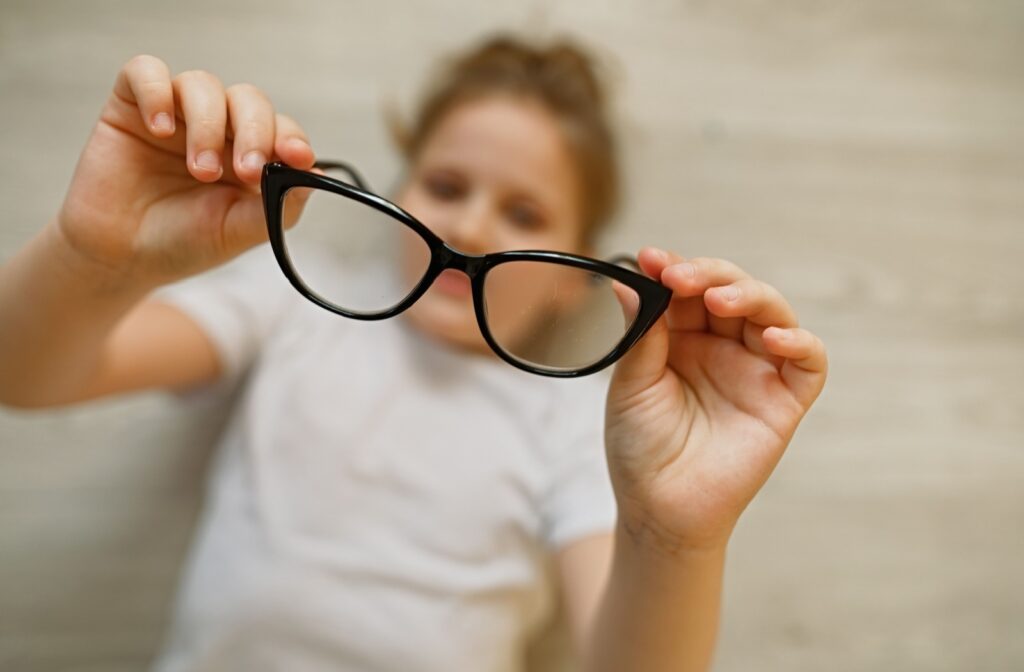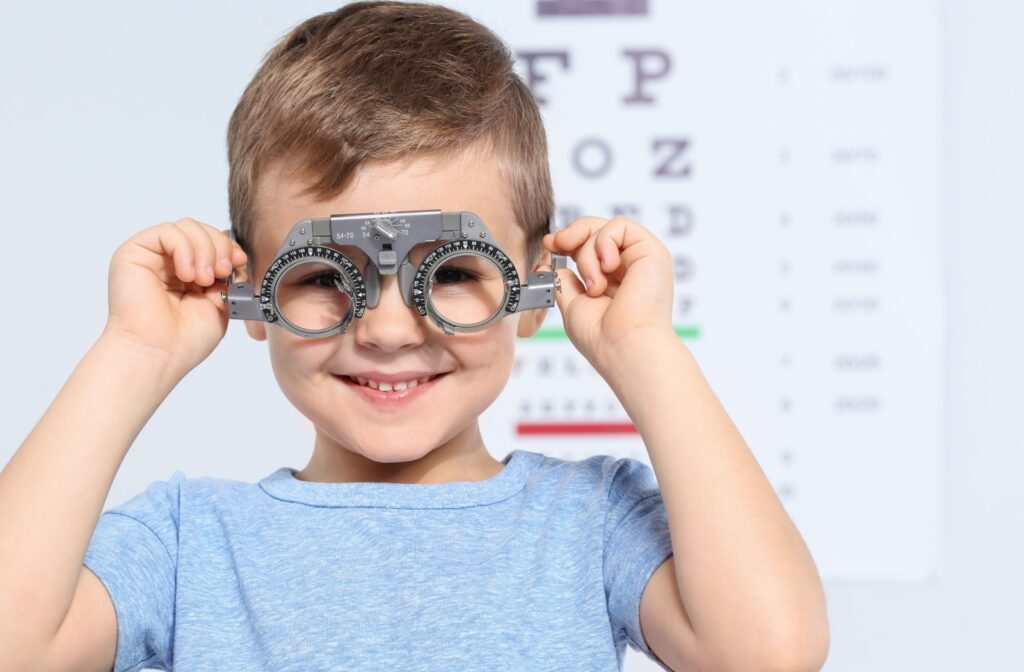When it comes to managing myopia, there’s no one-size-fits-all solution. The right approach often depends on your child’s age, comfort level, lifestyle, and how quickly their myopia is progressing.
The right myopia control option, such as Ortho-K, MiYOSMART lenses, atropine drops, soft contacts, or lifestyle changes, depends on your child’s needs. In some cases, combining treatments can offer better results for slowing myopia progression.
If you’re trying to decide which path to take, understanding how each method works can help you make an informed choice that supports your child’s eye health.
What Is Myopia?
Myopia, or nearsightedness, happens when the shape of the eye causes light to focus in front of the retina rather than directly on it. This leads to blurry distance vision while near vision remains clear.
Myopia often develops in school-age children and tends to progress as they grow. Slowing that progression is important because higher levels of myopia can increase the risk of serious eye conditions later in life, including glaucoma, retinal detachment, and macular degeneration.
Myopia Control Options
Myopia control involves using treatments or strategies to help reduce the speed of myopia progression over time. It doesn’t reverse nearsightedness but can limit it during the key years of eye growth.
Ortho-K
Orthokeratology, or Ortho-K, uses specially designed rigid contact lenses worn while sleeping. These lenses gently reshape the front surface of the eye overnight. In the morning, the lenses are removed, and most people can see clearly without glasses or daytime contacts throughout the day.
Ortho-K can be a good fit for children or teens with active lifestyles who don’t want to wear glasses during sports or school. It’s also effective at slowing the progression of myopia by influencing how light focuses on the retina.
MiYOSMART Spectacle Lenses
MiYOSMART lenses are specialized eyeglass lenses that provide clear central vision while also including treatment zones around the center. These zones alter peripheral light focus, which can slow the growth of the eye.

They look like regular glasses and are worn in the same way, making them a simple, non-invasive choice. This option can work well for children who are already comfortable wearing glasses or who prefer them over contact lenses.
Atropine Drops
Low-dose atropine drops are used once daily to help regulate eye growth. These medicated eye drops don’t correct vision directly but are typically paired with glasses or contact lenses to provide clear sight while managing myopia progression.
They’re easy to apply and are well-tolerated by most children. Atropine drops may be recommended on their own or as part of a combined treatment plan, especially if other options aren’t suitable or if myopia is progressing quickly.
Soft Contact Lenses
Some daily-wear soft contact lenses are specially designed for myopia control. These lenses have multiple focus zones that not only correct distance vision but also help manage how light enters the eye in a way that may reduce elongation of the eyeball.
Soft myopia control contacts are comfortable and convenient for kids or teens who are ready to manage contact lens hygiene. They can also be a good alternative for children who prefer not to wear glasses every day.
Lifestyle Changes
In addition to medical options, certain daily habits and environmental factors can play an important role in supporting eye health and potentially slowing myopia progression.
- Outdoor time: Spending time outside has been linked to reduced rates of myopia progression in children. Exposure to natural light and focusing on distant objects help relax the eyes, especially compared to long hours of close-up work.
- 20-20-20 rule: The 20-20-20 rule is another useful strategy. For every 20 minutes spent focusing on a near task like reading or screen time, take a 20-second break to look at something at least 20 feet away. This helps relax the eyes’ focusing system and can reduce the risk of fatigue.
- Managing screen time: Reducing screen time and encouraging regular breaks can help prevent digital eye strain. For kids using tablets or computers for school, a mix of structured screen breaks and posture adjustments can make a big difference.
- Wearing sunglasses: UV protection matters too. When kids spend time outdoors, sunglasses with UV-blocking lenses can help protect their developing eyes while still supporting the benefits of natural light exposure.
Lifestyle adjustments are most effective when paired with clinical treatments, providing more complete support for long-term visual wellness.
So, What’s the Right Option?
The most effective option depends on your child’s age, lifestyle, and how their myopia is progressing. Some kids thrive with MiYOSMART lenses or Ortho-K alone, while others may need a combination of therapies like atropine drops with glasses.
Speak with your optometrist to find the approach that suits your child’s needs.
Supporting You at Every Step
The right myopia control plan starts with understanding your options. At The Eye Studio by Kennedy Eye Clinic, we believe in thoughtful care that reflects our values: integrity, innovation, and authenticity. Our team is here to support you and your child with friendly, informed guidance every step of the way. If you’re ready to explore which myopia control option might be right for your family, book an appointment.



